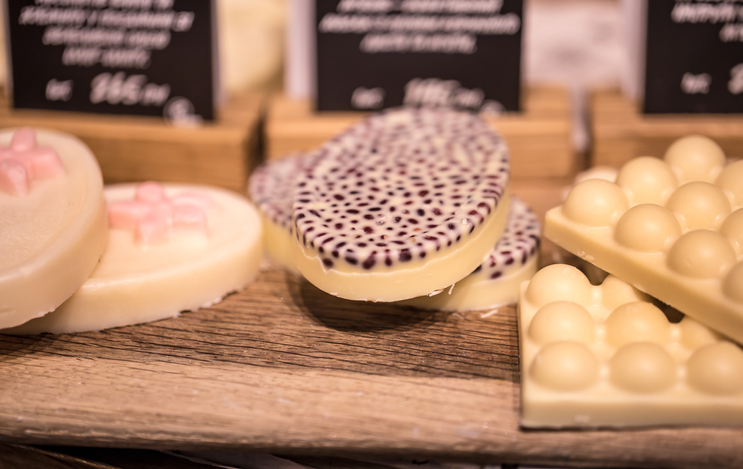Editor’s note: Nick Coates is customer agency C Space’s global creative consultancy director. This is an edited version of a post that originally appeared under the title, “Why not why.”
“Who are you?” said the Caterpillar.
This was not an encouraging opening for a conversation. Alice replied, rather shyly, “I – I hardly know, sir, just at present – at least I know who I was when I got up this morning, but I think I must have been changed several times since then.”
“What do you mean by that?” said the Caterpillar, sternly. “Explain yourself!”
“I can’t explain myself, I’m afraid, sir,” said Alice. “Because I’m not myself, you see.”
Alice's Adventures in Wonderland by Lewis Carroll
One of the most enjoyable sights of 2018 was watching commentators getting all hot and bothered about purpose and purpose-driven advertising. It’s a topic full of paradox and delightful topsy-turvies. Could it really be that the less you talk about your products (and the more you share your purpose) the more people want them? Why before what.
The big event was the Nike Kaepernick ad. It certainly wasn’t to everyone’s taste. “What was Nike thinking?” And yet the evidence showed it to be a shrewd and confident move – sales went up 31%.
 When Lush Fresh Handmade Cosmetics called out undercover police activity, Gillette tried to revise a version of masculinity it had partly created and Pepsi tried to hijack important social issues (the Kendall Jenner ad) it all went to prove two things: purpose can be relevant but talking about purpose demands authenticity. You can’t fake it!
When Lush Fresh Handmade Cosmetics called out undercover police activity, Gillette tried to revise a version of masculinity it had partly created and Pepsi tried to hijack important social issues (the Kendall Jenner ad) it all went to prove two things: purpose can be relevant but talking about purpose demands authenticity. You can’t fake it!
And the numbers prove it: Lush’s credibility drove a sales lift (despite the controversy). Gillette saw no change. Pepsi had to pull its ad and struggled to recover.

It’s a question of identity, and identity is slippery. In many ways it’s humanity’s central question: “Who are you?” Or, “Why are you here?” Brands with confident images that speak to consumers’ existing or aspirational sense of identity create the strongest emotional bonds because they complete gaps in our own stories about ourselves. And yet brand identity is kaleidoscopic, a dance of meaning based on context and conversation. Part of the paradox of identity is that it defines itself as much by what it isn’t as what it is. This is normal: societies and languages often evolve to keep people out (as well as draw them together).
In-groups also demand out-groups. So, when it comes to helping brands figure out how to say what they stand for, don’t forget the two-way mirror. When working with brands in very diverse categories, perspective switching helps. After all, how do you reconcile cheese spray and high-end biscuits for one of the largest food and beverage companies; mascara, hearing aids and tablets for an iconic beauty retailer and pharmacy brand; and Michelin-starred restaurants, nightclubs and pool parties for a multinational restaurant chain?
Courage to question
Because the company I work for believes that organizations need the courage to question, to be humble about identity questions, I embrace the unknown by:
- having people write brand love letters and break-up letters;
- sketching heaven and hell, the dark and light;
- asking why things will fail, not just why they’ll succeed;
- playing with inventing opposites and switching identities;
- building worlds with and without brands;
- taking sides and staging battles;
- running war games; and
- debating what’s right to do and also what right we have to do it.
Identity (and purpose) are polarities. So start inside – strong brand DNA leaves useful traces and stories – but challenge yourself by looking outside-in. Be humble. Be vulnerable. Invite critique. Play with stories and try them out. Debate and throw rocks. Explore your boundaries and let them be your mirror. Ask “Why?” But also ask, “Why not?”
Here are five workshop techniques you can use to explore your brand identity:
 Battles
Battles
Take sides on a topic and argue it out, playground style. Don’t hold back.
Art from within
Take a leaf out of the surrealists’ book and try drawing your feeling, without letting the pastel stop moving.
World without
Imagine (and build) a world in which your brand/product doesn’t exist. What’s missing? What’s better?
Sacred cows
State – and then slay – your limiting assumptions. Encourage candor and sort and sift the myths, taboos and half-truths.
Love (or break-up) letters
Pour passion/vitriol into 400 words of relationship narrative: the spark; highs and lows; pull and push.
